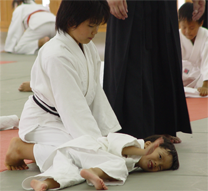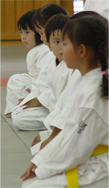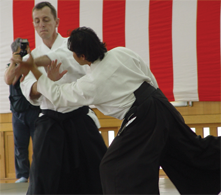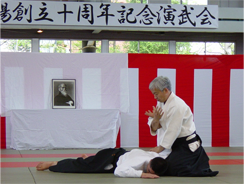Aikido
Aikido is a relatively modern martial art suitable for men and women of all ages.
It was founded by Morihei Ueshiba (1883-1969) and based on his study of traditional Japanese jujutsu combined with his strong spiritual convictions. Aiki (eye-key) literally means to unite one’s internal energy with that of an opponent. Aikido techniques rely upon joint locks and throws in which the opponent’s physical strength is used against them.
A typical class consists of warming up exercises, rolls and break falls, and practising techniques with a partner. One of the relatively unique aspects of aikido is the lack of competition. Class participants perform the techniques demonstrated by the instructor and take turns in the roles of receiver (uke) and the performer of the technique (tori or nage).
Aikido is an ideal way to develop physical fitness and improve posture, flexibility and coordination.
Similar to other martial arts, students undergo evaluation tests to progress through kyu and later Dan or black belt grades.
Aikido as practised at the Bayside Budokai is of the Aiki Kai Organisation presided over by Moriteru Ueshiba, grandson of the Founder and head of the honbu or headquarters dojo in Tokyo, Japan.
Bayside Budokai is fortunate to enjoy a close relationship with Shimamoto Katsuyuki Shihan 8 Dan of the Toyonaka Shosenji Dojo in Osaka Japan. Dan gradings held by Bayside Budokai members are internationally recognised with examinations conducted by Shimamoto Shihan on the authority of the Aiki Kai Hombu Dojo.
Beginners
Those wishing to start training can join at any time. At the beginning loose fitting clothing (not short pants) is fine. However, in time students will need to acquire a judo or karate keiko gi or training uniform.
Juniors
The Bayside Budokai conducts a class catered specifically for juniors or children of primary school age. Young people of High School age are eligible to practise in the adult class. The junior class aims to develop basic skills, discipline and good manners. Classes are designed to be fun without sacrificing the quality of training.
Parents are encouraged to join in and assist during classes whenever possible.
For the interests of all concerned, the club maintains procedures to manage the risks associated with teaching children.




